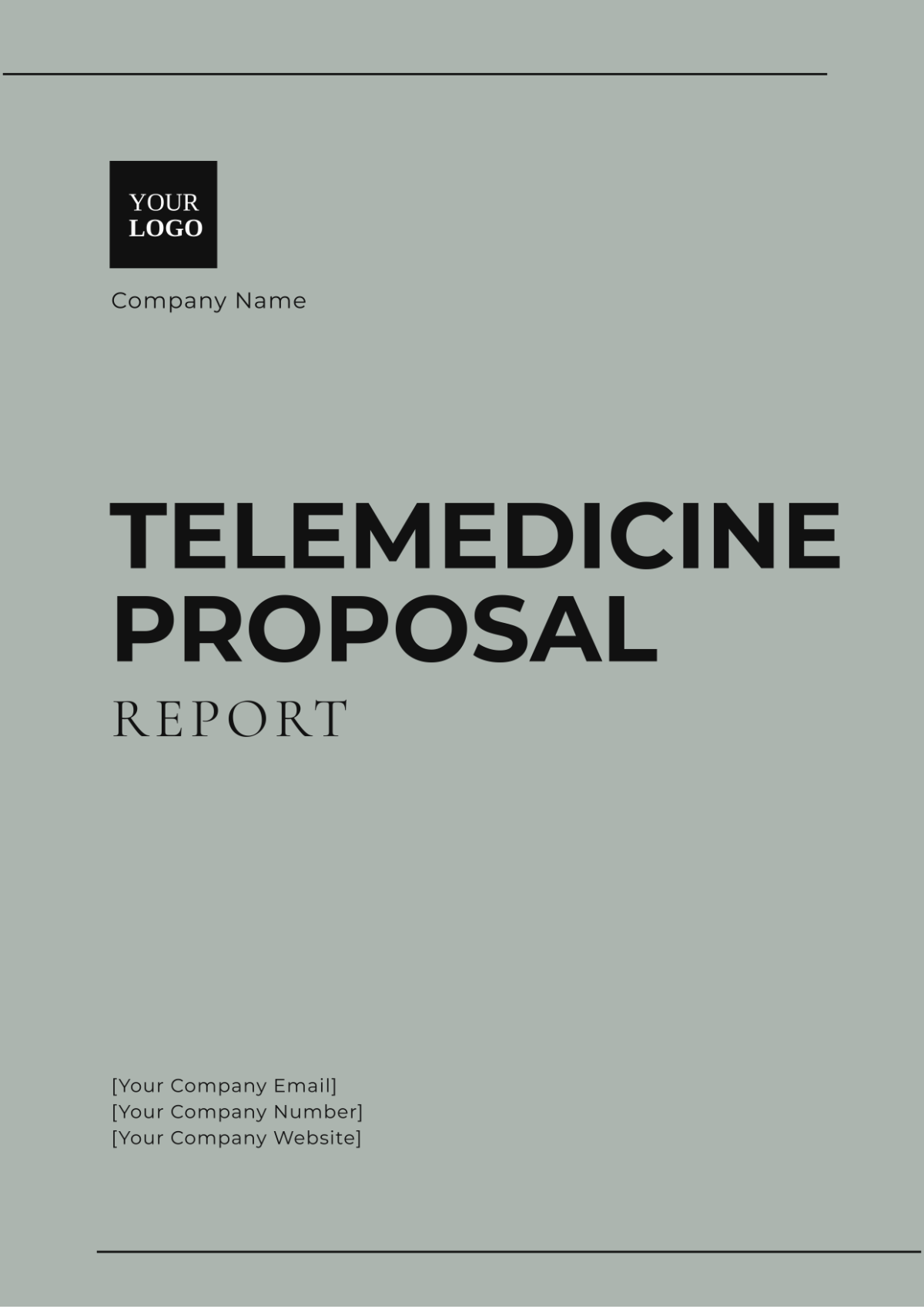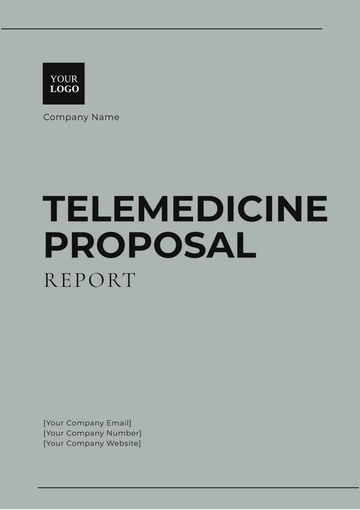Telemedicine Proposal Report
1. Executive Summary
This document presents a comprehensive plan for implementing or enhancing telemedicine services. The proposal includes detailed information on the required technology, strategic approaches, cost estimates, and anticipated outcomes. The primary objective is to persuade stakeholders to approve or fund the project, which is designed to improve healthcare accessibility, efficiency, and quality.
2. Technological Requirements
2.1 Hardware
The implementation of telemedicine services will require the following hardware:
Telemedicine carts or kiosks
High-resolution digital cameras
Microphones and speakers with noise-cancellation features
Secure internet connections with adequate bandwidth
Tablets or laptops for healthcare providers
2.2 Software
Key software elements include:
HIPAA-compliant telehealth platforms
Electronic Health Records (EHR) integration
Patient management systems
Data encryption solutions
Video conferencing software
2.3 Network Infrastructure
Network infrastructure needs to support telemedicine include:
Broadband internet access with high-speed connectivity
VPNs for secure remote access
Firewalls and other cybersecurity measures
Backup and recovery systems
3. Strategies for Implementation
3.1 Stakeholder Engagement
Engaging stakeholders is crucial for the success of the telemedicine project. Key strategies include:
Conducting regular meetings and presentations
Soliciting feedback and suggestions from healthcare providers and patients
Creating an advisory committee with representatives from all stakeholder groups
3.2 Training and Development
Effective training programs are essential to prepare staff. Training will cover:
Using telemedicine technology
Ensuring patient confidentiality and data security
Effective communication skills for remote consultations
3.3 Marketing and Awareness
To ensure high adoption rates, a strategic marketing plan will be implemented, including:
Educational webinars and informational sessions for patients
Promotional materials distributed through various channels
Partnerships with community organizations
4. Cost Analysis
Item | Cost | Description |
|---|
Hardware | $500,000 | Purchase of telemedicine carts, cameras, microphones, etc. |
Software | $200,000 | Licensing, EHR integration, VPNs, and other software solutions |
Network Infrastructure | $150,000 | Upgrading internet connections, firewalls, and cybersecurity measures |
Training Programs | $50,000 | Staff training sessions and workshops |
Marketing | $100,000 | Educational and promotional activities |
Miscellaneous | $75,000 | Contingency funds and other unforeseen expenses |
Total Cost | $1,075,000 | |
|---|
5. Expected Outcomes
Implementing or improving telemedicine services is expected to yield significant positive outcomes.
5.1 Healthcare Accessibility
Increased access to healthcare services for rural and underserved communities
Reduced patient travel time and costs
Expanded reach to specialists and sub-specialists
5.2 Operational Efficiency
Streamlined patient management and reduced administrative burden
Efficient use of healthcare resources and facilities
Improved scheduling and reduction in no-show rates
5.3 Quality of Care
Enhanced patient monitoring and follow-up care
Improved patient satisfaction and engagement
Timely diagnosis and treatment interventions
6. Conclusion
The proposed telemedicine services implementation and improvement plan is a strategic initiative designed to enhance healthcare delivery. The outlined technology infrastructure, strategies, and cost analysis provide a robust framework for achieving the expected outcomes. We strongly believe that this initiative will significantly benefit all stakeholders involved and look forward to your support and approval.
Report Templates @ Template.net






























